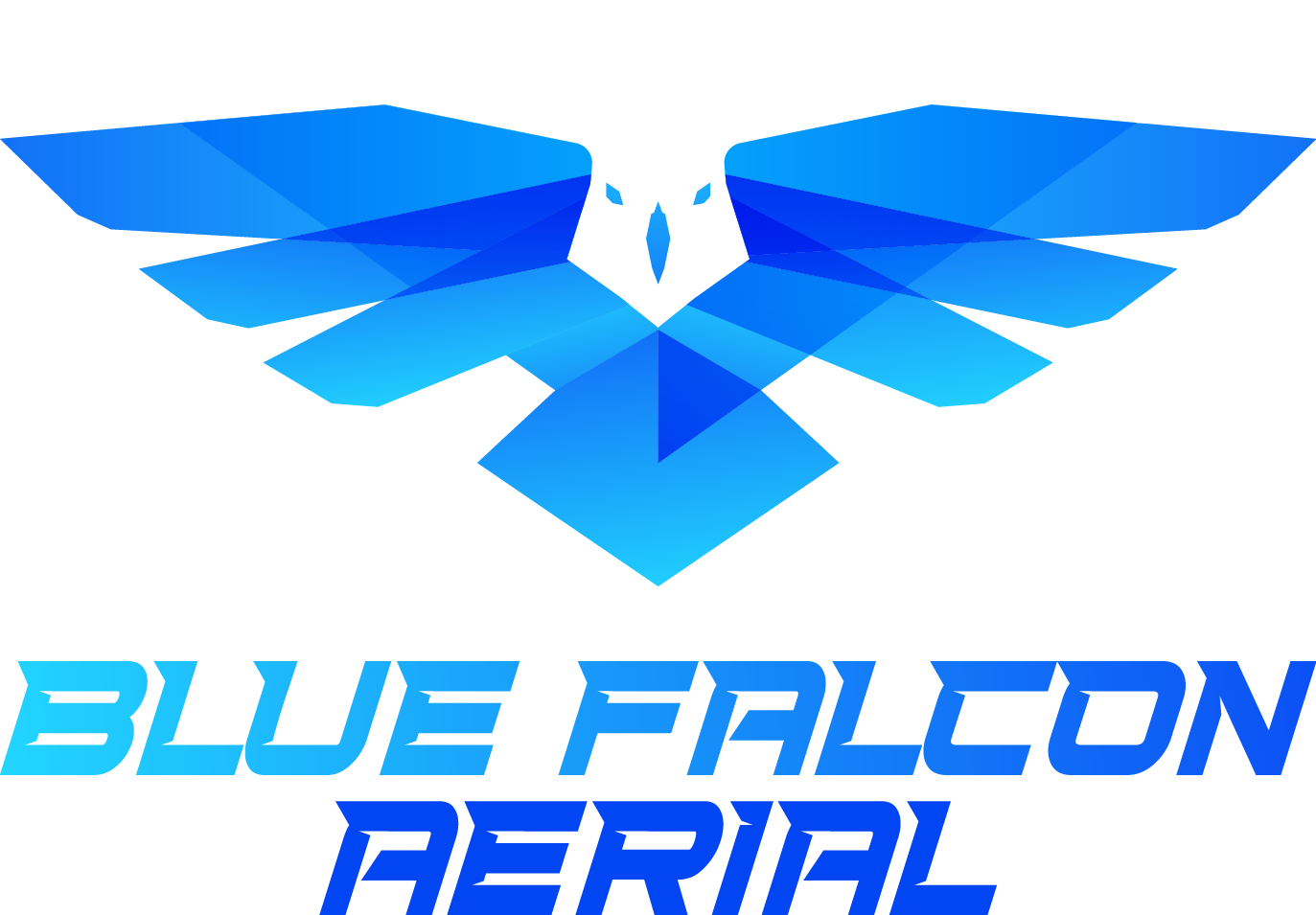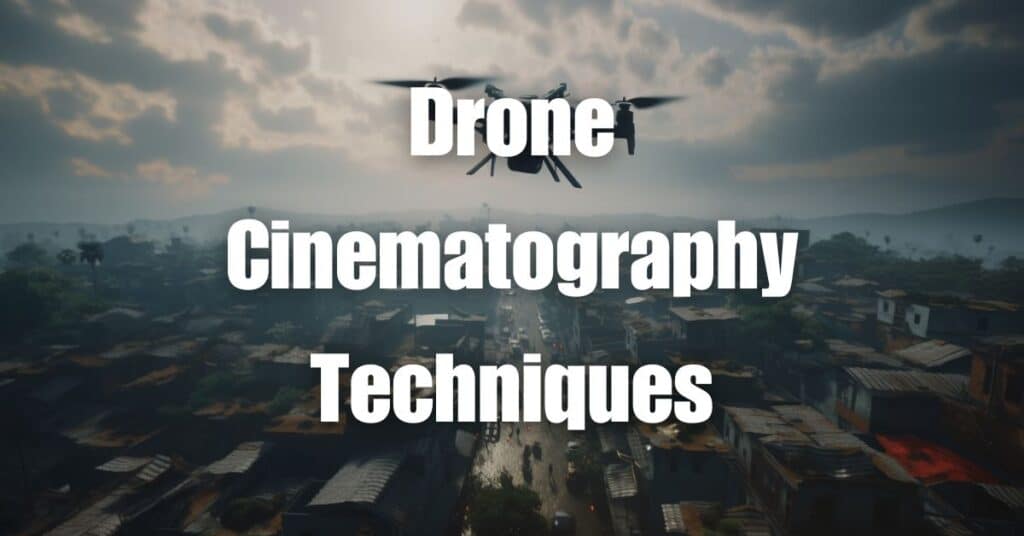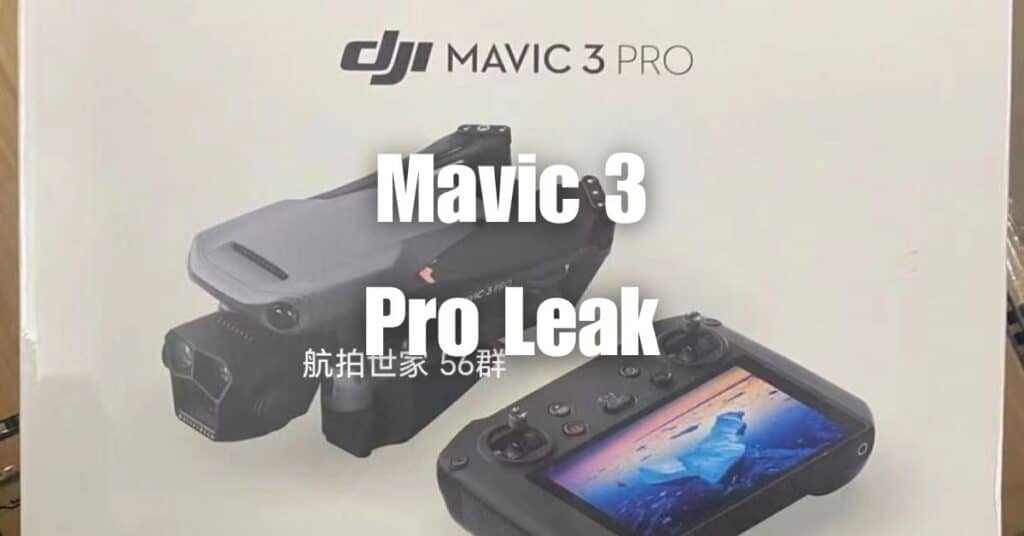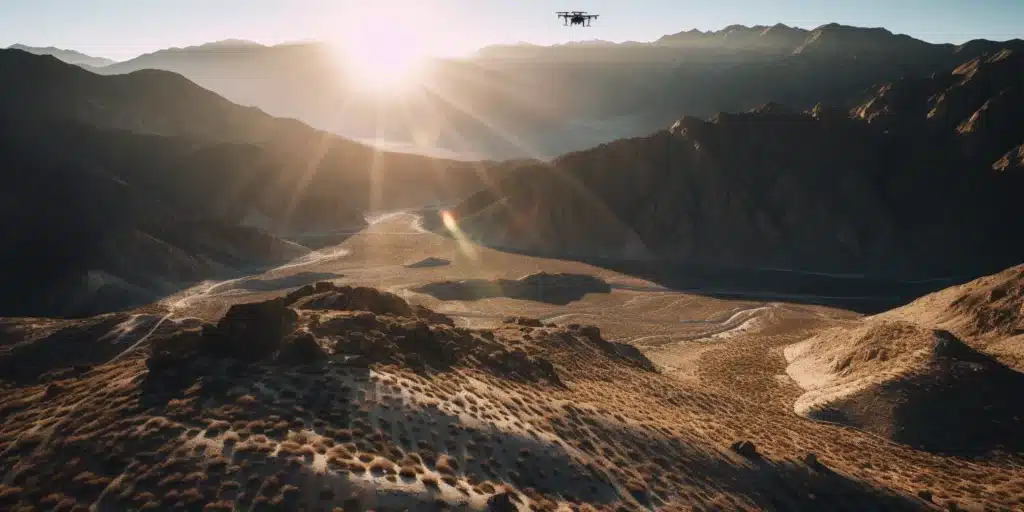Mastering the art of drone cinematography can elevate your filmmaking to new heights. With stunning aerial shots and smooth, dynamic movements, you can create visually captivating content. In this comprehensive guide, we’ll answer your most pressing questions and explore essential drone cinematography techniques that will help you achieve breathtaking footage. From understanding drone features and mastering basic techniques to advanced tactics and post-production, you’ll learn the secrets of professional drone cinematographers.
Key Takeaways
- Choosing the Right Drone: Focus on camera resolution, stabilization, and flight performance. Look for 4K or 6K cameras and quality gimbals.
- Camera Settings: Master shutter speed, aperture, ISO, and white balance for optimal footage.
- Accessories: ND filters, extra batteries, and protective cases enhance the cinematography experience.
- Flight Patterns: Learn orbiting, tracking, and reveal shots for dynamic footage.
- Smooth Camera Movements: Use gimbals and fly in calm conditions; practice manual control.
- Composition Techniques: Apply Rule of Thirds, leading lines, and foreground interest for visual impact.
- Advanced Techniques: Experiment with parallax effect and dolly zoom for unique shots.
- Lighting and Post-Production: Utilize golden hour and color grading; stabilize footage in post-production.
- Safety and Legality: Follow legal restrictions, safety protocols, and local regulations.
- Beginner Tips: Choose user-friendly drones, practice basic flying and camera skills, start with easy cinematography techniques.
- Professional Services: For advanced projects like LiDAR or Orthomosaic, consider professional services like those offered by Blue Falcon Aerial.
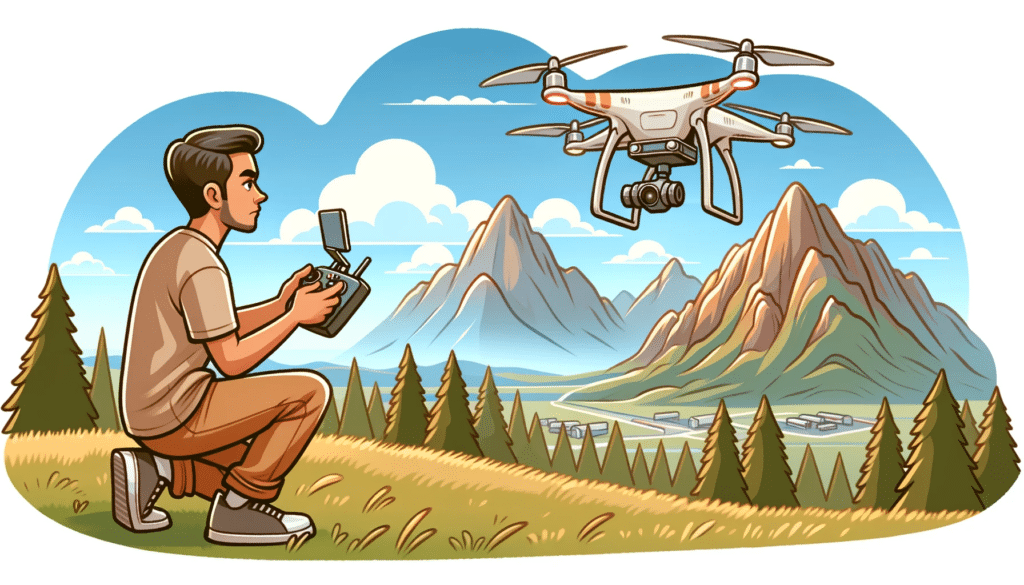
Essential Equipment for Drone Cinematography
Choosing the Right Drone
When selecting a drone for cinematography, it’s important to consider factors such as camera resolution, stabilization, and flight performance. Look for drones with high-resolution cameras, such as 4K or even 6K, for crisp, detailed footage. The drone should also have a high-quality gimbal for smooth camera movements and stable footage. Additionally, consider drones with longer flight times and advanced GPS features to ensure uninterrupted shooting and precise positioning.
Camera Settings for Optimal Results
To capture stunning footage, it’s crucial to understand and adjust camera settings accordingly. Key settings to master include:
- Shutter speed: A slower shutter speed can result in more natural motion blur, while a faster shutter speed can help freeze fast-moving subjects. Keep in mind that the shutter speed should be double the frame rate for a more cinematic look.
- Aperture: Control the depth of field and exposure by adjusting the aperture. A lower f-stop number results in a shallow depth of field, while a higher number gives a deeper depth of field.
- ISO: Adjust the ISO to control the camera’s sensitivity to light. A lower ISO value will result in less noise, but may require additional light. A higher ISO can brighten the image, but may introduce more noise.
- White balance: Set the white balance according to the lighting conditions to ensure accurate colors in your footage.
Accessories for Drone Cinematography
Investing in quality accessories can further enhance your drone cinematography experience. Consider these additions:
- Neutral Density (ND) filters: ND filters reduce the amount of light entering the camera, allowing you to use slower shutter speeds and achieve a more cinematic motion blur.
- Extra batteries: Longer shoots require additional power, so it’s wise to have extra batteries on hand.
- Drone backpack or case: Protect your investment with a durable and convenient carrying case or backpack designed for drone storage and transportation.
Mastering Basic Drone Cinematography Techniques
Drone Flight Patterns
Understanding various flight patterns is key to capturing dynamic and engaging footage. Some common patterns include:
- Orbiting shots: Fly the drone in a circular motion around a subject, keeping it in focus. This technique can add depth and interest to your footage.
- Tracking shots: Follow a moving subject, either from behind, the side, or in front, to create a sense of movement and action.
- Reveal shots: Start with a close-up of a subject, then fly the drone backward and upward, gradually revealing the surrounding scenery for a dramatic effect.
Smooth Camera Movements
Achieving smooth camera movements is essential for professional-looking drone cinematography. Follow these tips for success:
- Use a gimbal: A high-quality gimbal stabilizes the camera, reducing vibrations and ensuring smooth footage.
- Fly in calm conditions: Windy weather can make it challenging to control the drone and maintain steady camera movements. Opt for calmer days to ensure the best results.
- Practice manual control: While many drones offer automated flight modes, learning to control the drone manually will give you more creative freedom and the ability to make subtle adjustments for smoother shots.
Composition Tips
Applying basic composition rules, such as the Rule of Thirds and leading lines, can greatly improve the visual impact of your drone footage. Consider these tips:
- Rule of Thirds: Imagine your frame divided into a 3×3 grid. Position your subject along the grid lines or at the intersections for a more balanced and visually appealing shot.
- Leading lines: Use natural or man-made lines in the scene to guide the viewer’s eye towards the main subject or focal point.
- Foreground interest: Incorporating elements in the foreground of your shots can add depth and create a sense of scale. Experiment with different angles and heights to find the most visually engaging perspective.
- Symmetry and patterns: Look for symmetrical compositions or repeating patterns in the landscape to create visually striking footage.
- Framing: Use natural or architectural elements to frame your subject, drawing the viewer’s attention and adding visual interest.
By mastering these basic drone cinematography techniques, you’ll be able to create stunning aerial footage that captures your audience’s attention. As you gain experience and confidence, you can explore more advanced techniques to further enhance your filmmaking skills.

Improving Drone Cinematography Skills
Planning and Pre-visualization
Before you start shooting, plan your shots and create a storyboard or shot list. This will help ensure you capture all the necessary footage and allow you to work more efficiently on location. Consider the following steps for effective planning:
- Scout the location: Visit the location before your shoot to identify potential obstacles, assess the lighting conditions, and find the best angles for your shots.
- Create a storyboard or shot list: Sketch out your desired shots or create a list of the scenes you want to capture. This will help you stay organized and ensure you don’t miss any crucial footage.
- Check weather conditions: Monitor the weather forecast and plan your shoot for optimal conditions, such as golden hour or blue hour for beautiful lighting.
Creative Ideas for Drone Shots
Experimenting with different camera angles, heights, and movements can help you develop a unique style and capture visually captivating footage. Consider these creative ideas:
- Bird’s eye view: Shoot directly from above to capture a unique perspective and highlight patterns or textures in the landscape.
- Low-angle shots: Fly the drone closer to the ground and tilt the camera upwards for a dramatic and immersive perspective.
- Combining movements: Mix different types of drone movements, such as orbiting and tracking, to create dynamic and visually engaging footage.
Drone Cinematography for Various Niches
Drone cinematography can be applied to a wide range of industries and niches, each with its own unique challenges and opportunities. Some popular niches include:
Real Estate
Capture stunning aerial footage of properties to showcase their size, layout, and surrounding landscape. Use smooth, sweeping movements to create a virtual tour of the property, highlighting its unique features.
Weddings
Add a unique perspective to wedding videos with drone cinematography. Capture dramatic shots of the venue, as well as intimate moments between the couple and their guests. Be mindful of noise and safety concerns, and coordinate with the wedding planner to ensure a seamless integration into the event.
Indie Filmmakers
Drone cinematography can add production value to independent films without breaking the budget. Use drones to capture establishing shots, aerial perspectives, and dynamic action scenes that would otherwise be difficult or expensive to achieve.
Advanced Drone Cinematography Techniques
Parallax Effect
Create a visually captivating parallax effect by combining drone movement with a change in focal length. To achieve this effect, fly the drone sideways while keeping the camera focused on a stationary subject. As the drone moves, the background will appear to shift at a different speed than the subject, creating a sense of depth and movement.
Dolly Zoom
The dolly zoom, also known as the “Vertigo effect,” is an advanced technique that involves changing the camera’s focal length while moving the drone towards or away from a subject. This creates a surreal visual effect where the subject appears to stay the same size while the background appears to zoom in or out.
Lighting Techniques
Understanding and controlling lighting can significantly enhance the visual impact of your drone footage. Consider the following tips:
- Shoot during golden hour or blue hour: Capture footage during these times for beautiful, soft lighting and dramatic shadows.
- Use natural light sources: Take advantage of sunlight reflecting off water, windows, or other surfaces to create interesting lighting effects in your shots.
- Control exposure: Adjust your camera settings to ensure proper exposure, and consider using ND filters to manage light levels.
By exploring these advanced techniques, you can further elevate your drone cinematography skills and create truly stunning aerial footage.
Post-Production Techniques for Drone Footage
Color Grading
Color grading is a crucial step in the post-production process, allowing you to enhance the overall look and mood of your drone footage. Use color grading software to adjust elements such as contrast, saturation, and color balance to create a cohesive and visually appealing final product. Keep in mind the following tips:
- Maintain consistency: Ensure that the color grading is consistent across all clips to create a cohesive final product.
- Use LUTs: Look-Up Tables (LUTs) are color grading presets that can help speed up the process and achieve a specific look or style.
- Be subtle: Avoid over-saturating or applying heavy color casts that may detract from the natural beauty of your footage.
Stabilization
Even with a high-quality gimbal, your drone footage may still have some slight shakes or wobbles. Use stabilization software, such as Adobe Premiere Pro’s Warp Stabilizer, to smooth out any unwanted camera movements and create more professional-looking footage.
Sound Design
Sound design is an often-overlooked aspect of drone cinematography, but it can greatly enhance the viewer’s experience. Since drones typically do not capture usable audio, you’ll need to source and edit sound effects, music, and other audio elements in post-production. Consider the following tips:
- Choose appropriate music: Select music that complements the mood and pacing of your footage.
- Layer sound effects: Use sound effects to add depth and realism to your footage, such as ambient sounds, wind, or footsteps.
- Adjust audio levels: Ensure that music and sound effects are balanced and not overpowering any dialogue or important audio elements.
Legal and Safety Considerations for Drone Cinematography
Legal Restrictions
Before embarking on any drone cinematography project, familiarize yourself with the legal restrictions and regulations in your area. These may include:
- Drone registration: Many countries require drones to be registered with a governing authority, such as the Federal Aviation Administration (FAA) in the United States.
- Pilot certification: In some regions, you may need to obtain a specific certification or license to operate a drone for commercial purposes.
- No-fly zones: Be aware of no-fly zones, such as near airports or sensitive government facilities, and avoid flying your drone in restricted areas.
Safety Precautions
To ensure the safety of both yourself and others, follow these best practices when flying your drone for cinematography:
- Perform a pre-flight check: Inspect your drone and its components before each flight to ensure everything is in proper working order.
- Maintain line of sight: Keep your drone within your line of sight at all times to avoid collisions and maintain control.
- Follow local drone regulations: Adhere to any altitude restrictions, speed limits, and other regulations set forth by your local governing authority.
- Be mindful of people and property: Avoid flying your drone too close to people, animals, or private property without permission.
By staying informed about legal and safety considerations, you can ensure that your drone cinematography is conducted responsibly and in compliance with local regulations.
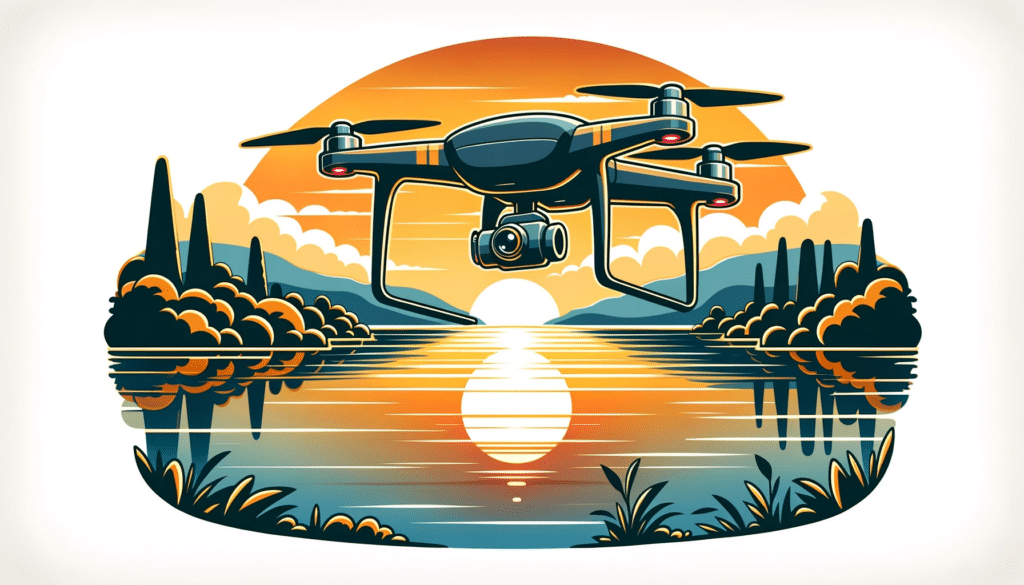
Drone Cinematography for Beginners: Getting Started
Choose the Right Drone for Your Needs
As a beginner, it’s important to select a drone that matches your skill level and cinematography goals. Look for drones with beginner-friendly features, such as:
- Easy-to-use controls: Opt for a drone with an intuitive controller that makes flying and capturing footage more accessible for beginners.
- Automated flight modes: Drones with pre-programmed flight modes can help you capture professional-looking shots with minimal effort.
- Obstacle avoidance: Drones with built-in obstacle avoidance sensors can help prevent crashes and increase your confidence as a new pilot.
Learn the Basics of Drone Flying
Before attempting any drone cinematography, spend time practicing and honing your basic flying skills. Familiarize yourself with the drone’s controls, and practice maneuvers such as hovering, ascending, descending, and flying in different directions. Start with small, controlled movements, and gradually increase the complexity of your maneuvers as you become more comfortable.
Study Composition and Camera Settings
Understanding the fundamentals of composition and camera settings is essential for capturing stunning drone footage. Study principles such as the Rule of Thirds, leading lines, and framing to improve the visual impact of your shots. Additionally, learn how to adjust your drone’s camera settings, such as shutter speed, aperture, ISO, and white balance, to achieve optimal results.
Easy Drone Cinematography Techniques for Beginners
Tilt Reveal
The tilt reveal is a simple but effective technique for adding interest to your drone footage. Start with the camera pointed downwards, then slowly tilt it upwards to reveal the landscape or subject. This can create a sense of anticipation and wonder as the scene unfolds before the viewer’s eyes.
Fly-Through
A fly-through shot involves flying the drone through a narrow or enclosed space, such as between trees or through a window. This technique adds depth and perspective to your footage and can make for a dramatic and engaging shot. As a beginner, start with larger, more open spaces before attempting more challenging fly-throughs.
Crane Shot
A crane shot is a vertical camera movement that simulates the effect of a camera crane, moving the camera from a low to a high position or vice versa. This technique can be used to reveal a subject or landscape and create a sense of scale. To execute a crane shot, slowly ascend or descend your drone while keeping the camera focused on your subject.
By starting with these beginner-friendly drone cinematography techniques, you can quickly build your skills and confidence, paving the way for more advanced and creative shots as you progress in your drone filmmaking journey.
Blue Falcon Aerial for Orthomosaic and LiDAR Projects
If you’re looking to take your drone cinematography to new heights or have specific needs, such as orthomosaic and LiDAR projects, Blue Falcon Aerial is the company to turn to. They are experts in aerial data collection and can provide professional services for a variety of industries, including construction, agriculture, and environmental management. With their extensive experience and high-quality deliverables, Blue Falcon Aerial can help you achieve your project goals with ease.
To learn more about how Blue Falcon Aerial can assist you with your orthomosaic and LiDAR needs, visit their deliverables page for detailed information on the services they offer.
Conclusion
Mastering the art of drone cinematography requires practice, dedication, and a keen eye for detail. By focusing on essential techniques, investing in the right equipment, and adhering to legal and safety guidelines, you’ll be well on your way to capturing stunning aerial footage. Don’t forget to explore creative ideas, experiment with advanced techniques, and continually improve your skills.
As you advance in your drone filmmaking journey, remember that companies like Blue Falcon Aerial are available to assist with more specialized projects, such as orthomosaic and LiDAR applications. To learn more about how Blue Falcon Aerial can help you take your drone cinematography to new heights, check out their comprehensive guide on building and growing your drone business.
If you require any drone services or have questions about how Blue Falcon Aerial can help you achieve your goals, don’t hesitate to contact them for professional assistance.
